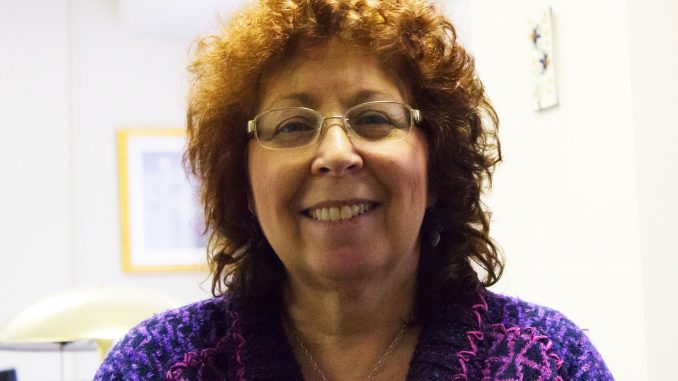
Though they don’t usually figure into biomedical research, scientists at Temple’s Physical Therapy department have found one “cave” that holds the key to understanding balance in adults with cerebral palsy.
The cave – which stands for “cave automatic virtual environment” – located in Pearson Hall’s basement, is a room with three large screens arranged in a “U” shape. Inside, 3D images and a tilting stage allow researchers to study how participants use their eyes, inner ears, feet and joints to maintain balance.
Dr. Emily Keshner, the department’s chair who built the cave in 2006, said that setup cost close to half a million dollars.
Keshner has already used the cave to study balance in stroke patients and aging women. Now, she has teamed with two other scientists, Dr. Richard Lauer and Dr. Carole Tucker, to determine why adult patients with cerebral palsy are more likely to fall.
To test this, the researchers had participants stand harnessed on stage while wearing 3D glasses. Motion markers and muscle-activity electrodes were placed on participants to measure their balance. Then, the stage or the image on the screen was moved while participants tried to keep their balance.
Lauer said even though their feet may be telling them otherwise, they’ve found that if the image moves upward, the patient falls backward. If it moves downward, they fall forward.
“We know adults with cerebral palsy have a difficult time standing and a lot of times, it’s attributed to muscle weakness and spasticity,” Lauer said. “Therefore, they can’t stand because they don’t have the muscle capacity, but that’s a small part of how we stand.”
Other systems – the ears, eyes, brain and even the feet – are also involved in balance, Lauer said.
“With the cave, we can give them conflicting visual signals,” he said. “We can give them conflicting signals at their feet. Most people can tune it out, but if you’re using that signal differently somehow, you can be fooled by the [tilting of images on the] screen even though the rest of your body is telling you nothing else has changed. These differences can then be captured and analyzed.”
The team has screened 30 adults with cerebral palsy from across the country, but participant recruitment has been a challenge.
“We’ve had to build it from the ground up because you can’t go to one place and find them,” Lauer said.
Some participants were also hesitant about the study because of negative experiences they have had with the research community.
“It’s taken a long time to build up trust,” he said.
While the team is still recruiting, it has begun a preliminary analysis.
“People think of cerebral palsy as this pediatric illness and it’s not, it’s a life-long disability,” Lauer said. “It’s a brain injury that occurs well before anything is developed yet, before structures have formed in the brain.”
Perhaps because of this early onset, most cerebral palsy research in the United States focuses on children. Yet, according to the Cerebral Palsy International Research Foundation, there are approximately one million adults and children with Cerebral Palsy in the United States.
The team hopes the data it collects will help design better interventions for adults with cerebral palsy.
“If somebody is overly dependent on visual information, then maybe during therapy we practice balance and standing with conflicting visual information or maybe with no visual information,” Tucker said.
“Or maybe I use a device that can enhance the information from their feet or from their vestibular system so they learn how to use these systems better and not be so reliant on vision,” she added.
The team expects to publish its preliminary results in January 2015.
Liora Engel-Smith can be reached at liora.engel-smith@temple.edu


Liora, very good! I had to forward your email to our other email address as it would not display on AOL. I certainly learned something new. Love, David